Strengthening Fiduciary Oversight: Raising the Standard of Care
Why the future of fiduciary oversight lies in clarity, independence,and information integrity.
Fiduciary oversight has always been a cornerstone of corporate governance. But in today’s environment of cross-border structures, data complexity, and rising accountability standards, the role of the fiduciary has expanded from safeguarding assets to safeguarding trust.
Regulators and investors alike now expect boards to prove that oversight is continuous, informed, and auditable. The G20/OECD Principles of Corporate Governance (2023) stress that boards must ensure the integrity and timeliness of information, and this requires a new standard of diligence that blends ethics, structure, and information discipline.

1. The New Standard of Care
Global fiduciary expectations are converging around a single theme: evidence-based accountability.
- The SEC’s fiduciary interpretation and the U.S. Department of Labour’s 2024 Retirement Security Rule heighten duties of care and loyalty for advisers and boards.
- In Delaware, Senate Bill 21 (2025) introduces stricter procedures for conflicted-party transactions, reinforcing the need for independent oversight.
- The CIMA Corporate Governance Rule (2023) in the Cayman Islands obliges boards to maintain robust internal controls, documentation, and
systems of compliance.
Each reform expands the fiduciary’s responsibility to prove oversight, not just claim it. Information quality, conflict management, and transparent reporting have become the true measures of competence.
“Fiduciary duty no longer ends with a good decision—it begins with a good process.”
2. The Four Failure Modes of Fiduciary Oversight
Most failures stem from process weakness, not intent. These four recurring issues define today’s governance risk and compliance landscape.
A. Conflicts and Independence Drift
Independence can erode through repeated relationships or incentives. Regulators highlight independence as the foundation of fiduciary duty.
Stronger oversight practices:
- Pre-meeting conflict registers and recusal protocols.
- Committee rotation and periodic independence reviews.
- Transparent documentation of potential conflicts.
Tech advantage: A digital disclosure register with automated attestations provides a verifiable risk and compliance audit trail.
B. Information Asymmetry and “Board Pack Noise”
Directors face information overload but insight scarcity. OECD guidance calls for decision-useful data rather than volume.
Better governance habits:
- One-page “Decision Basis” summaries outlining key assumptions and dissent.
- Data dashboards that emphasize trend analysis and exceptions.
Tech advantage: Workflow automation and GRC platforms can curate data flows, allowing boards to focus on analysis instead of administration.
C. Valuation and Fair Value Oversight
The FCA’s valuation reviews reveal persistent weaknesses in how boards assess fair value. Fiduciaries must be able to defend the methodology, inputs, and judgments behind valuations.
Practical steps:
- Regular independent price challenges.
- Quarterly deep dives into Level 3 valuations or outliers.
- Documenting every instance of challenge or divergence.
Tech advantage: A secure, permissioned valuation repository maintains institutional memory and satisfies regulatory compliance audits.
D. Oversight Liability and Minutes Quality
The evolving Caremark standard in U.S. law has raised the bar for documentation. Courts evaluate whether boards maintained effective systems for monitoring and response.
Protective practices:
- Minutes that capture questions, dissent, and rationale.
- Explicit linkage of discussions to specific risk areas or regulatory requirements.
Tech advantage: Version-controlled minutes and digital signatures preserve information integrity and traceability for fiduciary review.
3. Fiduciary Oversight Across Jurisdictions
In multi-jurisdictional environments like Cayman, Luxembourg, or Delaware, fiduciary risk multiplies. The CIMA Corporate Governance Rule, the AIMA Fund Directors’ Guide, and the ICGN Global Governance Principles all converge on one message: effective oversight relies on timely, accurate, and accessible information.
Key practices:
- Harmonized documentation standards across fund entities.
- Cross-border audit trails for investor and regulator confidence.
- Consistent reporting cadence for boards and committees.
Tech advantage: Secure multi-tenant or single-tenant GRC software centralizes governance data across entities, ensuring accuracy and reducing duplication.
4. Strengthening Oversight Without More Bureaucracy
Boards can enhance risk and compliance outcomes by replacing paperwork with clarity.
A pragmatic governance playbook helps strengthen fiduciary oversight without expanding bureaucracy.
| Focus Area | Governance Habit | Digital Enabler |
|---|---|---|
| Conflicts | Pre-meeting disclosure registers | Centralized compliance log |
| Decision Papers | One-page “Decision Basis” summary | Template-driven reports |
| Valuation | Quarterly review & challenge log | Secure valuation archive |
| Minutes | Capture inquiry, dissent, rationale | Version-controlled storage |
| Director Skills | Annual capability vs. risk map | Digital training tracker |
| Third-Party Oversight | Ongoing due diligence of administrators | Workflow automation for DDQs |
These habits balance independence with efficiency — and show regulators that fiduciaries operate with precision and accountability.
5. Emerging Trends in Fiduciary Governance
- Continuous Oversight: Shift from periodic reviews to real-time monitoring through risk management software.
- Data Provenance: Verifying the origin and integrity of data becomes a core fiduciary function.
- ESG Accountability: Sustainability metrics evolve into fiduciary responsibilities, shaping investor confidence.
- AI Risk Governance: Directors must understand bias, explainability, and model accountability within fintech and compliance systems.
“Tomorrow’s fiduciaries won’t just interpret data; they’ll be judged by the integrity of its origins.”
6. What “Good” Looks Like
| Dimension | Red (Risk) | Amber (Developing) | Green (Best Practice) |
|---|---|---|---|
| Independence | Conflicts undocumented | Ad hoc disclosures | Quarterly conflict register |
| Information | Overloaded packs | Curated but static | Real-time dashboards |
| Valuation | Management only models | Limited review | Transparent challenge logs |
| Minutes | Minimal summaries | Partial rationale | Full record of inquiry & dissent |
| Oversight | Reactive | Procedural | Evidence-based, proactive |
7. The Future of Fiduciary Oversight
Fiduciary responsibility is evolving from judgement by hindsight to judgement by data integrity.
The most successful boards will treat governance risk and compliance as an ecosystem — connecting independence, process, and reliable information flow.
Forward-thinking fintech partners, including Longshore Labs, are enabling this evolution through API-first, single-tenant governance solutions that unify records, automate compliance workflows, and preserve transparency without adding complexity.
Yet the essence of oversight remains timeless: diligence, independence, and the courage to ask hard questions.
In fiduciary governance, the strongest defence is a clear record of thoughtful inquiry.



